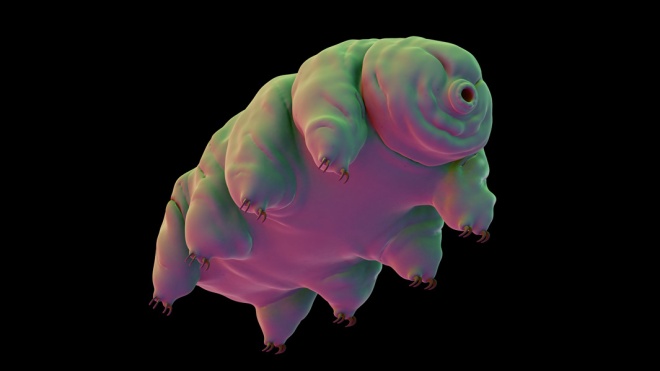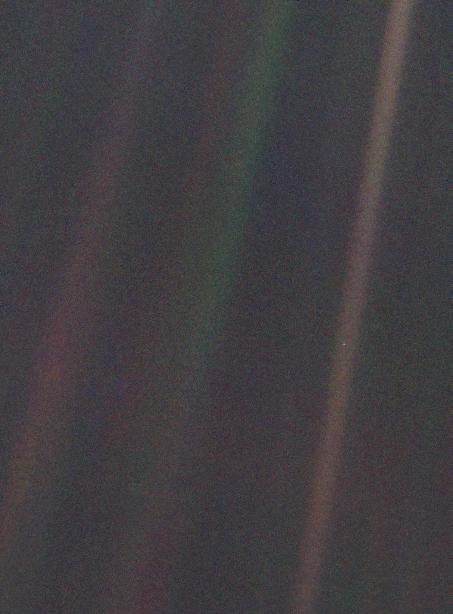
Three Lanes and Seven Alleys (三坊七巷) – Fuzhou, China


Thank you for visiting my blog! 
Hello! My name is Vivian Li, and I’m just now starting my blog about my studies on the solar system this upcoming semester.
I’m a junior undergraduate student in Vanderbilt University, and looking forward to great things this semester in ASTR2110!
Though I’m a computer science major and pursuing a minor in mathematics, I’m taking this astronomy course to learn more diverse topics during my time in college.
Before taking this class I had never really had an interest in astronomy other than a short run with the original series of Star Trek. My knowledge of astronomy, and the universe in general, was very limited because of this. Like most people I had a basic understanding of astronomy and the solar system, but the true vastness and complexity of the universe was foreign to me. I was aware that the size of the universe was incomprehensible but through learning multiple specific distances I was able to gain a greater perspective about the universe and my place in it. In addition to the new area of knowledge that I gained I found that the class material often made me think about religion and its relation to astronomy. Specifically how both shape a person’s view on how we came to exist and how the magic of the universe is often shaped to provide evidence for/against the existence of a higher being. Studying these astronomy topics has impacted me personally by allowing me to see the universe as a place of endless possibility. After all, how can the mystery of other intelligent life be such an outlandish idea when we are alive to know that galaxies millions of lightyears away are constantly colliding, and that there are entire solar systems being wiped out in what is a space relative “blink of an eye”. In addition to having a better grasp on the complexities of the universe, I also have a greater appreciation for the world and everything in it because of the processes that had to occur to make Earth and life possible. This class has convinced me that it’s easy to view the world as dull and boring until you understand the magic that came together to make it and everything else in existence.
Before taking this class I had never really had an interest in astronomy other than a short run with the original series of Star Trek. My knowledge of astronomy, and the universe in general, was very limited because of this. Like most people I had a basic understanding of astronomy and the solar system, but the true vastness and complexity of the universe was foreign to me. I was aware that the size of the universe was incomprehensible but through learning multiple specific distances I was able to gain a greater perspective about the universe and my place in it. In addition to the new area of knowledge that I gained I found that the class material often made me think about religion and its relation to astronomy. Specifically how both shape a person’s view on how we came to exist and how the magic of the universe is often shaped to provide evidence for/against the existence of a higher being. Studying these astronomy topics has impacted me personally by allowing me to see the universe as a place of endless possibility. After all, how can the mystery of other intelligent life be such an outlandish idea when we are alive to know that galaxies millions of lightyears away are constantly colliding, and that there are entire solar systems being wiped out in what is a space relative “blink of an eye”. In addition to having a better grasp on the complexities of the universe, I also have a greater appreciation for the world and everything in it because of the processes that had to occur to make Earth and life possible. This class has convinced me that it’s easy to view the world as dull and boring until you understand the magic that came together to make it and everything else in existence.
Astrobiology is a fascinating field that explores life both on and beyond Earth. One interesting topic that scientists who study astrobiology have been researching is how Jupiter and other similar planets have made life on Earth possible. It is believed that Jupiter has acted like a “meteor magnet” saving Earth and other smaller planets from being impacted by space debris. Without the gas giant’s help its possible that Earth would not have been suitable for life. Recently, an article was published about astronomer Stephen Kane and his team who discovered 2 Jupiter like planets far away from Earth (150 light years) that will be useful to further astrobiology research. The scientists hope that the two large planets can help provide clues about the possibility of life on smaller planets in other solar systems.
An interesting aspect about this discovery, is the method that Kane and his team used to detect the new planets. This creative method was utilizing both the wobble method (learned in class!) and direct imaging to be able to confirm a true wobble due to a planet’s gravitational pull. The scientists were able to use this method to discovery not only 2 new planets but a third giant planet near a previously discovered star. In the future Kane and his team will continue to search for planets in order to come closer to understanding if the factors that make planets habitable or common or not.
Astrobiology is a fascinating field that explores life both on and beyond Earth. One interesting topic that scientists who study astrobiology have been researching is how Jupiter and other similar planets have made life on Earth possible. It is believed that Jupiter has acted like a “meteor magnet” saving Earth and other smaller planets from being impacted by space debris. Without the gas giant’s help its possible that Earth would not have been suitable for life. Recently, an article was published about astronomer Stephen Kane and his team who discovered 2 Jupiter like planets far away from Earth (150 light years) that will be useful to further astrobiology research. The scientists hope that the two large planets can help provide clues about the possibility of life on smaller planets in other solar systems.
An interesting aspect about this discovery, is the method that Kane and his team used to detect the new planets. This creative method was utilizing both the wobble method (learned in class!) and direct imaging to be able to confirm a true wobble due to a planet’s gravitational pull. The scientists were able to use this method to discovery not only 2 new planets but a third giant planet near a previously discovered star. In the future Kane and his team will continue to search for planets in order to come closer to understanding if the factors that make planets habitable or common or not.
Source: New Moons
The Solar System is home to four giant gaseous planets named Jupiter, Saturn, Neptune, and Uranus. These gas giants have many satellites due to their mass and subsequent gravitational pull. Jupiter is the largest planet in the solar system and has fascinated humans for hundreds of years due to the large amount of moons that it has. There are currently 67 known moons orbiting Jupiter. The four largest moons were discovered by the famous astronomer Galileo Galilei in the year 1610. These large moons are called Io, Europa, Ganymede and Callisto and have distinct characteristics such as Europa being considered the smoothest in the solar system and Ganymede being the largest moon in the solar system. These 4 commonly known moons make up only 6% of the total moons that orbit around Jupiter. The other 63 moons are smaller and were discovered over the years by various scientists making the discovery of Jupiter’s moons a long-time group effort.
Jupiter’s moons are arranged into 3 groups. These three groups are the inner moons, galilean moons and outer moons. The inner moons, also referred to as the Amalthea group, are the ones that orbit close to Jupiter. The outer moons are the furthest from Jupiter and are made of smaller objects such as asteroids. These smaller moons (all under 3km) have wackier orbits than the inner and galilean moons because they are experiencing less of Jupiter’s gravitational force. Last year, scientists accidentally discovered 12 new moons orbiting around Jupiter while searching for another planet. One of these moons named Valetudo is particularly interesting due to it having prograde motion yet occasionally crossing retrograde moons due to its orbital incline. By studying the moons of Jupiter and likewise discovering new ones, scientists are better able to understand how the solar system came to be.

Source: New Moons
The Solar System is home to four giant gaseous planets named Jupiter, Saturn, Neptune, and Uranus. These gas giants have many satellites due to their mass and subsequent gravitational pull. Jupiter is the largest planet in the solar system and has fascinated humans for hundreds of years due to the large amount of moons that it has. There are currently 67 known moons orbiting Jupiter. The four largest moons were discovered by the famous astronomer Galileo Galilei in the year 1610. These large moons are called Io, Europa, Ganymede and Callisto and have distinct characteristics such as Europa being considered the smoothest in the solar system and Ganymede being the largest moon in the solar system. These 4 commonly known moons make up only 6% of the total moons that orbit around Jupiter. The other 63 moons are smaller and were discovered over the years by various scientists making the discovery of Jupiter’s moons a long-time group effort.
Jupiter’s moons are arranged into 3 groups. These three groups are the inner moons, galilean moons and outer moons. The inner moons, also referred to as the Amalthea group, are the ones that orbit close to Jupiter. The outer moons are the furthest from Jupiter and are made of smaller objects such as asteroids. These smaller moons (all under 3km) have wackier orbits than the inner and galilean moons because they are experiencing less of Jupiter’s gravitational force. Last year, scientists accidentally discovered 12 new moons orbiting around Jupiter while searching for another planet. One of these moons named Valetudo is particularly interesting due to it having prograde motion yet occasionally crossing retrograde moons due to its orbital incline. By studying the moons of Jupiter and likewise discovering new ones, scientists are better able to understand how the solar system came to be.


Tardigrades are the toughest animals that we have yet discovered, not due to their physical strength, but rather their incredible ability to survive. People praise cockroaches for their ability to survive levels of radiation that would be lethal to humans, but the real heroes are microscopic “water bears” called tardigrades. Tardigrades are extremophiles, or micro-organisms that are able to survive in the most extreme settings. They have been found within volcanoes, the deep sea, jungles, and Antarctica. To test the limits of their survival (which sounds pretty messed up), scientists have subjected these poor water bears to extreme temperatures, immense atmospheric pressures, lack of water, radiation, toxins, and even outer space. In all cases, tardigrades vastly outlive nearly every other animal on Earth, and they are the only known animal to be able to survive in space. The existence of these animals makes a believable case for microbial life in the most extreme environments possible all throughout the Universe. I can only imagine what medical breakthroughs could come from studying them further.
Source: Tardigrade (Wikipedia)
Here are two things I’ve been doing this semester (in addition to taking this course)
While these two facts seem barely related to this course and even less related to each other, I promise they are very related.

Look at this pale blue dot, “the only home we’ve ever known” as we heard Carl Sagan so elegantly say on the last day of class. “On it everyone you love, everyone you know, everyone you ever heard of, every human being who ever was, lived out their lives.” Here it is now, reduced to a small and insignificant speck. How can that not make you start thinking about your life, everyone you know, and everything that’s going to happen in the future? That’s what astronomy does to people.
As I think about being small and mortal, and I can’t help but think about the future. What’s next? How far will we go? How much will see? Will we get to see it? The seed of this wondering was planted by this class. My answer has been pulled in two directions: optimistic and pessimistic. It’s being pulled by two different things: Star Trek and my writing class.

The show Star Trek is, to me, a relic of an older and more optimistic past. It spoke of the fabulous technology we would create and intricate societies we would develop. Compare this to more recently developed shows that take place in the future: they focus instead on dystopian, authoritarian governments and overcoming genocide and environmental disaster. Star Trek is not conflict-free, but all of it rests on the premise that humans get really smart, build really cool ships, and are fundamentally virtuous enough to build important relationships with others in the universe. I’ve been working my way through the show this semester, and can’t help but think about their exciting travels as we talk about exoplanets in class. It all feels so optimistic–there’s so much out there to explore, and here’s a show that lets us see exactly what we could do!
In contrast to this is my other class, where we write about climate change. Sometimes we write about hopeful things like eco-friendly innovations. Most of the time, we write about pessimistic things like past extinctions and the likelihood that the next one (involving us) will be soon. We talk about how many emissions we need to cut down, and how unlikely it is that we will make the necessary changes in time. We talk about bull-headed politicians and greedy corporations and extreme imbalances of power that prevent any real progress from happening. In short, I’ve spent the semester thinking and writing about how utterly doomed humanity is and it all makes me doubt that our civilizations can survive long enough to explore the stars.
This is why the Great Filter theory of the Fermi paradox is so captivating to me. I like to imagine Star Trek: The Next Generation as our future–one full of courage and exploration. Perhaps we already made it past the Great Filter. Maybe there’s a thrilling future ahead where we actually develop the technology necessary to see the universe and realize that there are other civilizations out there. But as I’ve spent the semester researching the complex problem of climate change, I’m becoming increasingly convinced that the Great Filter is still ahead of us, and that it comes in the form of climate change. Will we be able to manage the environmental changes? Or will the instant gratification of more primitive and destructive forms of energy destroy us before we develop from more advanced and sustainable technology.
Depending on the day of the week (and how recently I’ve watched Star Trek) I’m either optimistic or pessimistic about the future. Sometimes, thinking about space is exciting and fun. Sometimes, it’s worrisome and exhausting. All we can do is keep going.